How to Arrange Furniture in a Small Living Room? 7 Expert Steps

Table of Contents
Arranging furniture in a small living room can be akin to solving a delightful puzzle.
It’s not just about making it all fit; it’s about making it fit well.
In this guide, we will delve into the art of crafting an effective furniture arrangement in small living rooms, where space is limited but creativity knows no bounds.
You’ll discover that the right arrangement can maximize both space and aesthetics, turning your cozy corner into a functional and visually pleasing retreat.
So, let’s dive in and learn how to arrange furniture in a small living room and how to make the most of every square foot!
7 Main Steps How to Arrange Furniture in a Small Living Room

I. Assessing Your Space:
When arranging furniture in a small living room, it’s essential to thoroughly assess your space.
This step is fundamental to the process of How to Arrange Furniture in a Small Living Room.
Here’s how to go about it:
- Determine the Dimensions and Layout

First and foremost, grab your measuring tape and note down the exact dimensions of your small living room.
Measure both its length and width.
Knowing the dimensions is crucial for selecting appropriately sized furniture and creating a layout that maximizes every inch.
Now, consider the room’s layout.
Does it have an open-concept design, or is it a more enclosed space? Understanding the layout will help you determine how to best utilize the available area.
- Identify Architectural Features

Next, take note of any architectural features that can influence your furniture arrangement.
These might include:
Windows: Assess the size, placement, and style of windows.
They not only affect the distribution of natural light but also impact where furniture can be placed.
Doors: Identify the location of doors, including entry doors and any connecting doors to other rooms.
Consider the swing of the doors and how they affect traffic flow.
Focal Points: Determine if your living room has a focal point, such as a fireplace, a prominent wall, or a built-in shelving unit.
Focal points often dictate the arrangement of furniture around them.
- Consider the Room’s Traffic Flow and Potential Obstacles

The flow of foot traffic is a critical factor in furniture arrangement.
Imagine how people move through the room and which paths they are likely to take.
Avoid obstructing these pathways with furniture.
Keep in mind:
Entrances and Exits: Ensure that entry and exit points are easily accessible and unobstructed. This is especially important for safety and convenience.
Obstacles: Identify any potential obstacles like radiators, heating vents, or electrical outlets.
These should be considered when placing furniture to maintain functionality.
By thoroughly assessing your small living room, you set the stage for a successful furniture arrangement.
II. Declutter and Prioritize:

Before diving into the intricacies of how to arrange furniture in a small living room, it’s imperative to address the clutter and prioritize what truly matters.
Decluttering is not merely a preliminary step; it’s a transformative one.
A clutter-free space not only appears more spacious but also allows for a more functional and harmonious arrangement of furniture.
Decluttering can be a cathartic process when approached systematically.
Consider these practical tips to declutter your small living room effectively:
Start Small: Begin with a specific area or category, like books, décor, or electronics, and work your way through the room gradually.
Sort and Purge: Create piles for items to keep, donate, or discard.
Be honest about whether each item truly adds value to your space.
Storage Solutions: Invest in storage solutions like baskets, shelves, and cabinets to keep items organized and out of sight.
Minimalism: Embrace the principles of minimalism, focusing on quality over quantity and keeping only items that align with your aesthetic and functional goals.
This process not only enhances the visual appeal of your space but also ensures that every furniture choice serves a purpose in your daily life.
III. Choosing the Right Furniture:
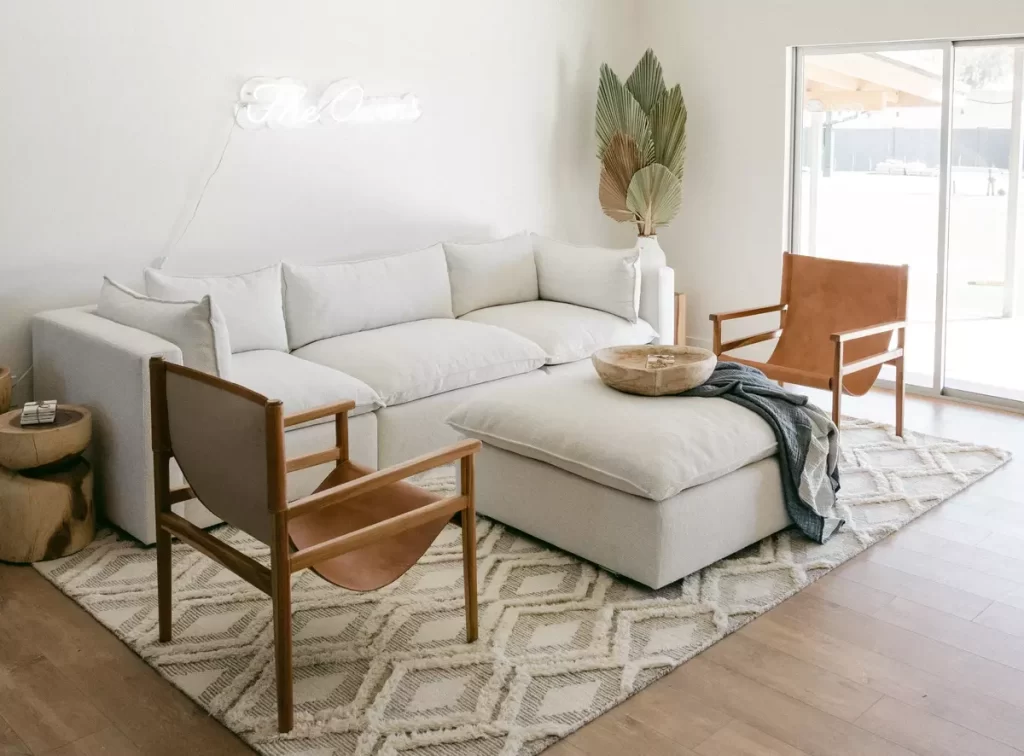
Selecting the right furniture is a pivotal step in the art of arranging furniture within the confines of a small living room.
The choices you make will significantly impact both the aesthetics and functionality of your space.
- Emphasizing Prioritization of Essential Furniture Pieces

Once you’ve decluttered, the next step in How to Arrange Furniture in a Small Living Room is prioritization.
Given the limited space, it’s crucial to select and arrange essential furniture pieces that serve your needs and complement the room’s aesthetics:
Sofa: Prioritize a comfortable yet appropriately sized sofa.
It often serves as the centerpiece of your living room.
Coffee Table: Choose a coffee table that fits the space and offers practicality without overwhelming the room.
Seating: If space allows, add seating options like armchairs or a loveseat.
Opt for pieces that balance comfort and functionality.
Storage Solutions: Integrate furniture with built-in storage options, such as ottomans with hidden compartments or TV consoles with shelve
- Appropriately Sized Furniture

The importance of appropriately sized furniture cannot be overstated in the context of how to arrange furniture in a small living room.
It directly affects the flow, comfort, and visual appeal of your space. Consider the following points:
Proportional Balance: Furniture that fits well within the room’s dimensions creates a sense of balance, avoiding the feeling of overcrowding or emptiness.
Traffic Flow: Choosing pieces that leave ample space for movement helps maintain a smooth traffic flow and accessibility.
Versatility: Opt for versatile furniture pieces that serve multiple functions, reducing the need for excess items.
- Space-Saving Furniture Options

Small living rooms thrive on ingenuity, and space-saving furniture options are your allies in maximizing every inch:
Multi-Functional Furniture: Invest in furniture pieces that serve dual purposes, such as a sofa bed or a coffee table with storage compartments.
Modular Pieces: Modular furniture allows you to adapt your layout to different occasions.
Rearrange sections as needed, offering flexibility in a small space.
- Furniture with Exposed Legs for an Airy Feel

To create an open and airy ambiance in your small living room, consider furniture with exposed legs:
Visual Lightness: Furniture lifted off the floor on slender legs creates the illusion of more space by allowing light to pass through, making the room feel less cramped.
Ease of Cleaning: Exposed legs simplify cleaning by providing easy access to the floor beneath, a practical consideration in compact spaces.
In How to Arrange Furniture in a Small Living Room, the choice of furniture is more than mere aesthetics; it’s a strategic move.
These choices enable you to make the most of your limited space while maintaining an open and inviting atmosphere.
IV. Creating a Functional Layout:

Arranging furniture in a small living room is not just about squeezing everything in; it’s about crafting a layout that is both functional and aesthetically pleasing.
In this section, we will explore the art of creating a functional layout for your small living room and discuss various approaches in the context of How to Arrange Furniture in a Small Living Room.
- Importance of Functional Zones

Dividing your small living room into functional zones is crucial.
It not only maximizes the utility of the space but also enhances its visual appeal:
Purposeful Design: Each zone should serve a specific purpose, whether it’s seating, entertainment, or a workspace.
Traffic Flow: Define clear pathways between zones to maintain ease of movement.
- Determining the Focal Point and Creating a Layout
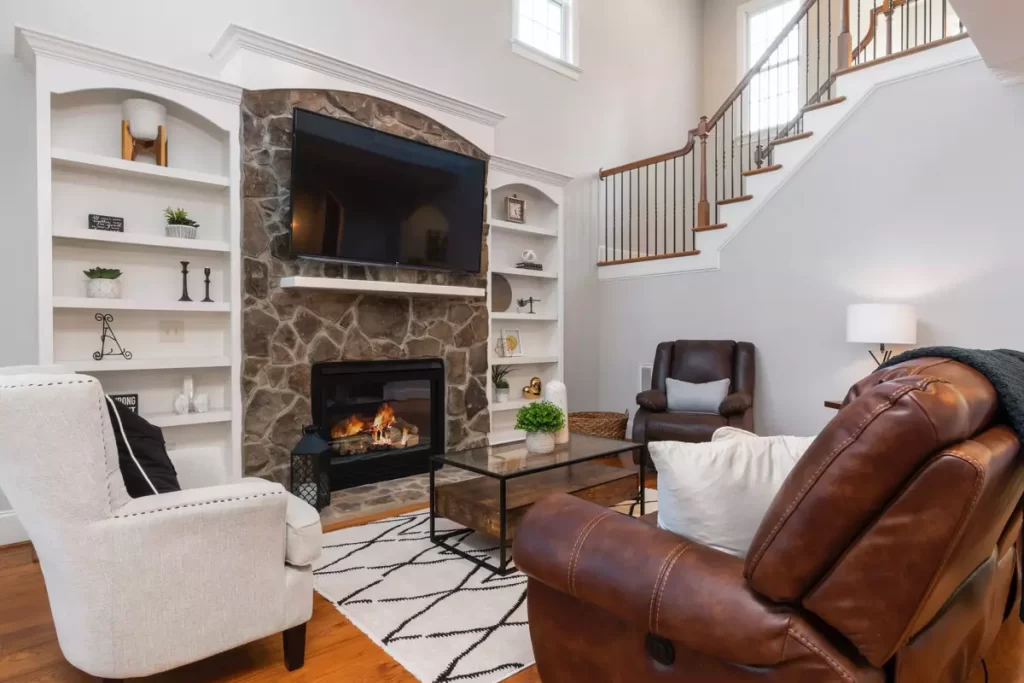
Identifying a focal point and arranging furniture around it is fundamental in small living room design:
Focal Point: Determine what will draw the eye – it could be a fireplace, a feature wall, or a prominent piece of art.
Layout: Arrange furniture to accentuate the focal point, creating a harmonious and engaging environment.
- Creating Balance and Flow with Furniture Placement
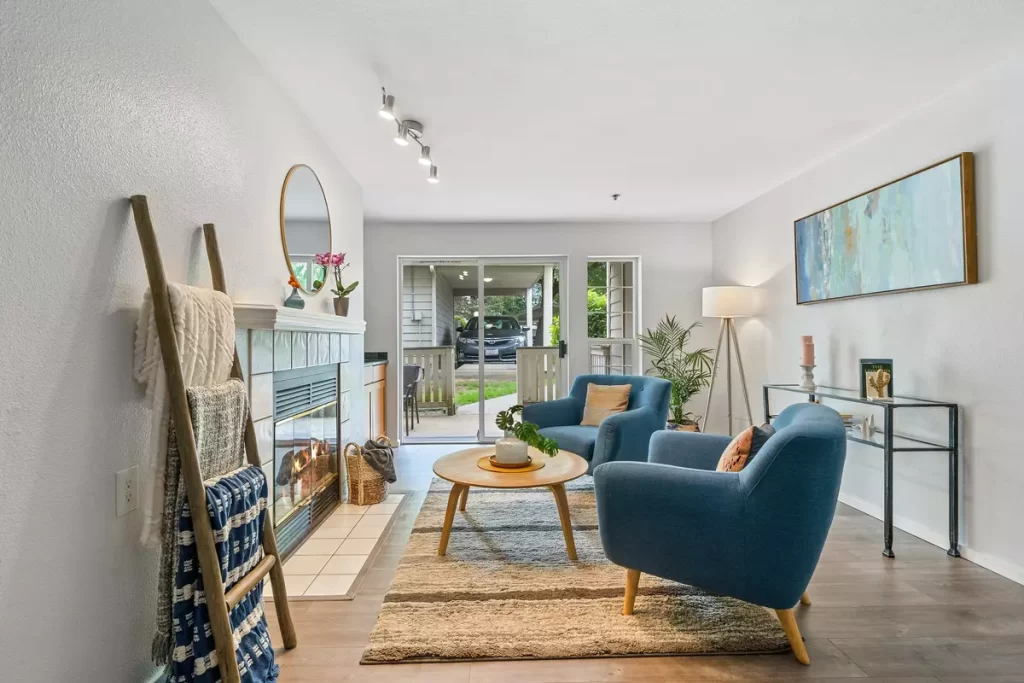
Achieving balance and flow in your layout is key:
Balance: Distribute furniture evenly to avoid visual heaviness on one side of the room.
Flow: Ensure that furniture placement allows for easy navigation and a comfortable seating arrangement.
- Different Layout Ideas

Consider various layout options to find the one that suits your needs, Each layout option comes with its own set of advantages and limitations:
L-Shaped Layout: Ideal for open-plan spaces, it defines separate areas while maintaining an open feel, but may require additional seating for larger gatherings.
U-shaped Layout: Excellent for creating a conversational setting but can limit flow in small spaces.
Floating Arrangement: Furniture is placed away from the walls, creating a sense of spaciousness, but may reduce the perceived coziness of the room.
In the world of How to Arrange Furniture in a Small Living Room, creating a functional layout is both an art and a science.
By defining zones, understanding focal points, achieving balance and flow, and exploring creative solutions, you can make the most of your space.
V. Maximizing Vertical Space:

In a small living room, every inch counts, and that includes the often underutilized vertical space.
To truly optimize your space when arranging furniture in a small living room, it’s essential to think beyond the floor level.
Here, we’ll explore strategies for maximizing vertical space and incorporating both storage and decoration into your small living room in the context of how to arrange furniture in a small living room.
1. Wall-Mounted Shelves
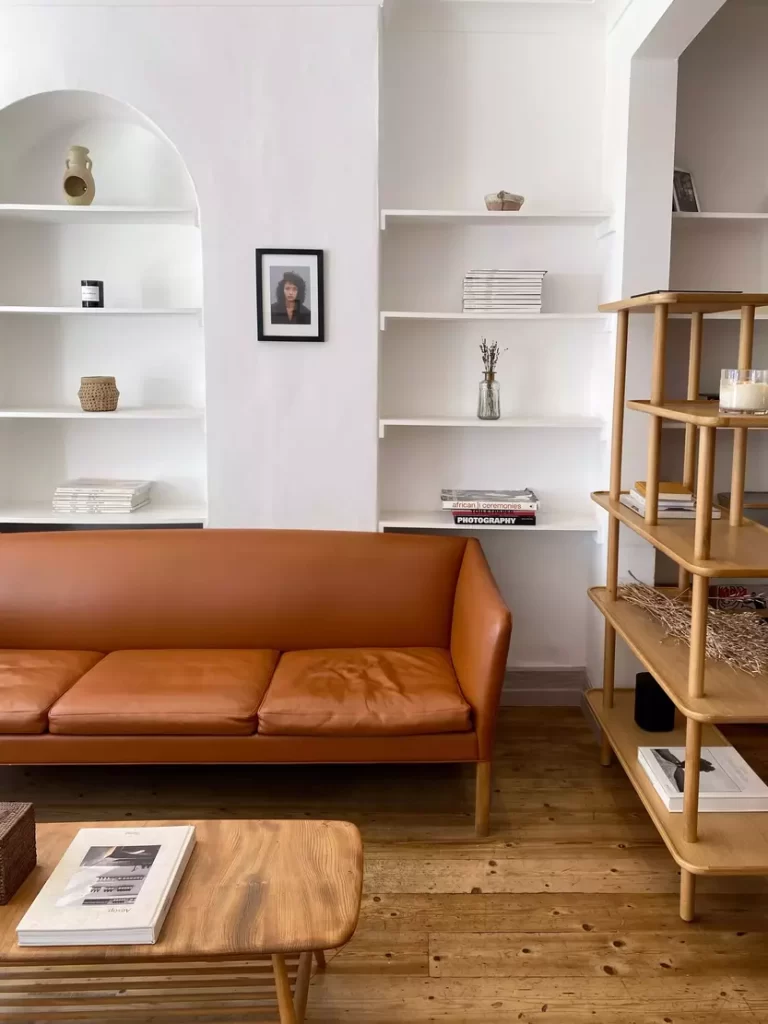
Wall-mounted shelves are a smart addition to small living rooms:
Efficient Use of Space: They maximize storage and display without consuming floor space.
Versatile Design: Easily adapt them to match your room’s layout and style.
Accessible Storage: Open shelves keep often-used items within easy reach and in clear view.
2. Bookcases

Bookcases, whether freestanding or built-in, are excellent vertical storage solutions:
Versatility: They accommodate books, décor, and storage items, enhancing functionality and style.
Design Flexibility: Customize bookcases to elevate the room’s aesthetics while serving practical purposes.
3. Storage Units

Consider investing in storage units designed specifically for small living spaces:
Modularity: Modular storage units can be customized to your specific needs and can evolve with your changing storage requirements.
Hidden Storage: Some storage units come with concealed compartments, keeping clutter out of sight.
In the realm of How to Arrange Furniture in a Small Living Room, maximizing vertical space is an indispensable strategy.
By using vertical space effectively, you can create a living room that is both functional and aesthetically pleasing, making the most of your limited square footage.
VI. Enhancing Ambiance with Lighting and Color:

When arranging furniture in a small living room, the role of lighting and color is not to be underestimated.
These two elements have a profound impact on the overall ambiance and perception of space within your living area.
In the context of How to Arrange Furniture in a Small Living Room, let’s delve into how lighting fixtures and a cohesive color scheme can work wonders for your room.
- The Impact of Lighting Fixtures
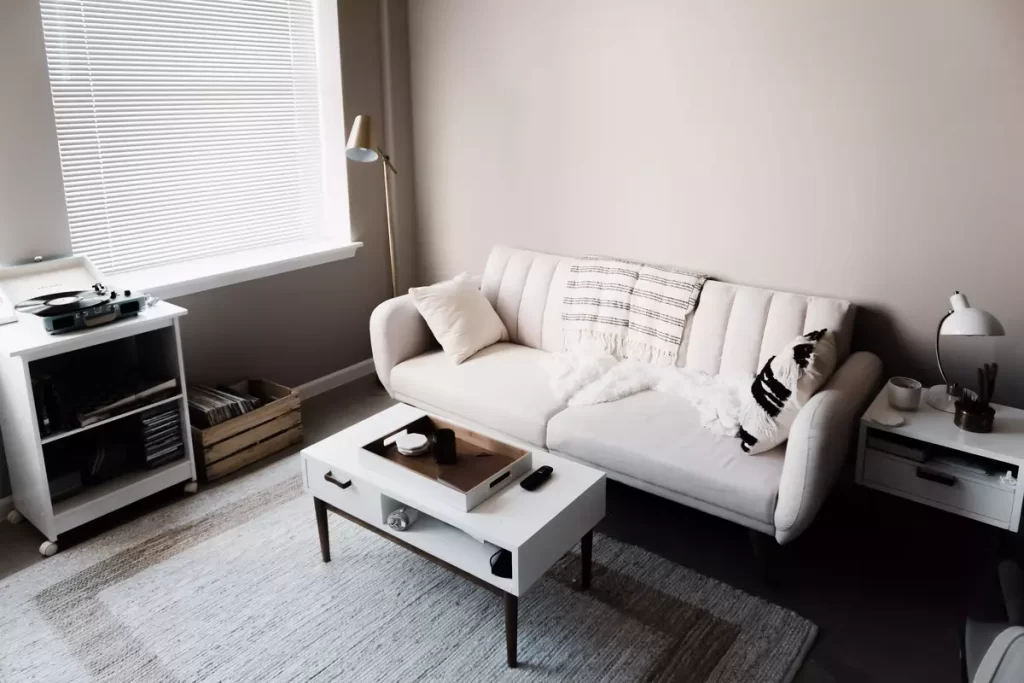
The choice of lighting fixtures can significantly influence how your small living room feels and functions:
Perception of Space: Well-placed lighting can make the room appear more spacious.
Consider fixtures that distribute light evenly and avoid harsh shadows.
Focal Points: Use lighting to highlight focal points, drawing the eye and creating a sense of depth within the room.
Functional Zones: Incorporate task lighting for specific areas, such as reading nooks or workspaces, to enhance their functionality.
- A Cohesive Color Scheme for Visual Expansion
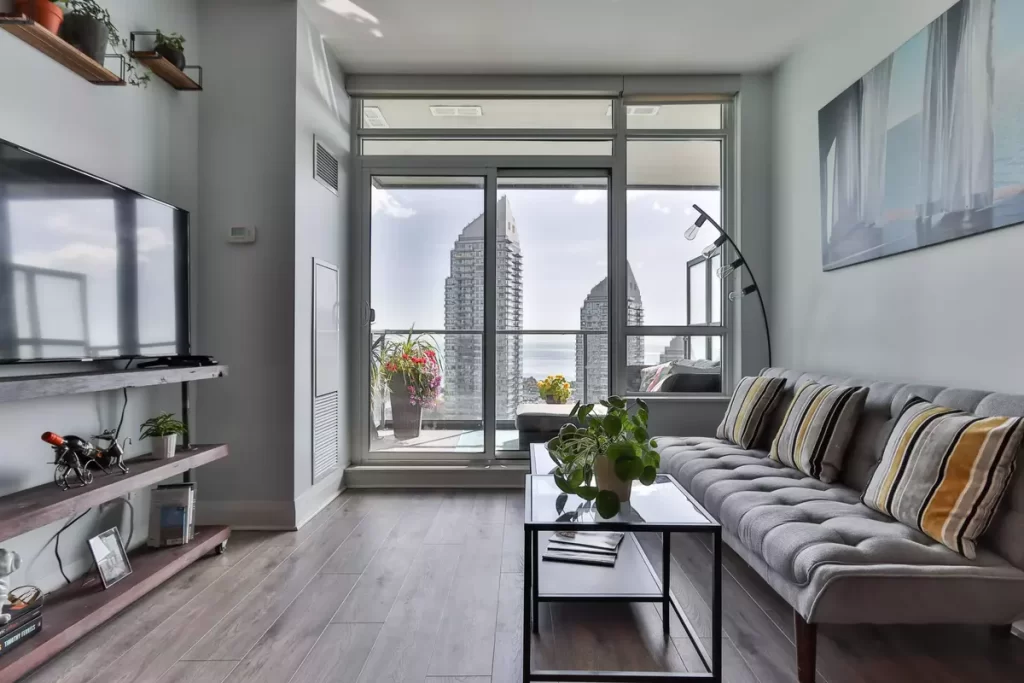
A well-thought-out color scheme can visually expand your small living room:
Lighter Shades: Opt for lighter colors on walls, furniture, and décor.
Light hues reflect more light and create a sense of openness.
Monochromatic Palette: A monochromatic color scheme, using various shades of the same color, adds depth without overwhelming the space.
Accents: Use pops of a complementary or contrasting color sparingly to add visual interest without clutter.
In How to Arrange Furniture in a Small Living Room, the interplay of lighting and color is like a magic wand.
Thoughtful lighting choices can alter the perception of space, making it feel larger and more inviting.
VII. Elevating Your Space with Accessories and Décor:
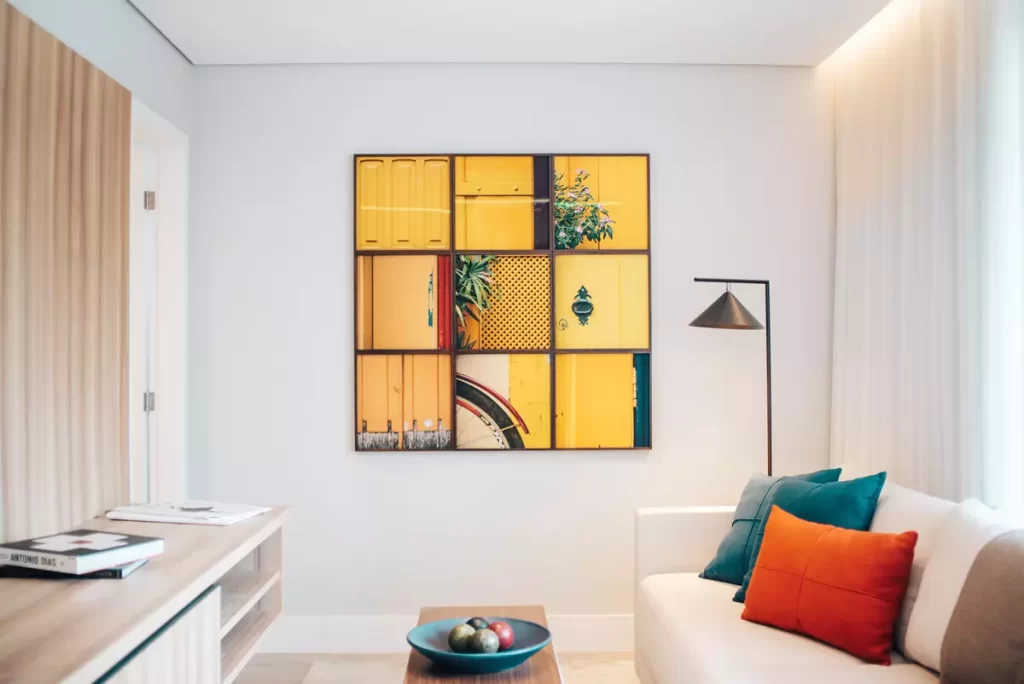
Accessories and décor play a vital role in transforming your small living room into a stylish and inviting space.
When thinking about How to Arrange Furniture in a Small Living Room, it’s essential to consider how these elements can enhance your room’s aesthetics and functionality.
Here, we’ll explore tips for choosing small-scale accessories and the magic of mirrors in creating the illusion of space.
- Tips for Choosing Small-Scale Accessories and Décor

Selecting the right accessories and décor items is paramount when dealing with limited space:
Scale Matters: Opt for smaller-scale items that complement your furniture without overwhelming the room.
Functionality: Choose accessories that serve both aesthetic and practical purposes, such as decorative trays or storage ottomans.
Coordinated Colors: Maintain a cohesive color scheme to create a unified and visually pleasing atmosphere.
- The Role of Mirrors in Expanding Space

Mirrors are a powerful tool for small living rooms, as they can create the illusion of more space:
Reflective Surfaces: Place mirrors strategically to reflect natural light, making the room feel brighter and more open.
Placement: Consider positioning mirrors across from windows or near light sources to maximize their reflective effect.
Decorative Impact: Choose mirrors with attractive frames to enhance both function and style.
In the realm of How to Arrange Furniture in a Small Living Room, accessories and décor serve as the finishing touches that elevate your space.
These thoughtful choices help create an inviting and stylish environment that maximizes the potential of your limited space.
25 Ideas for Furniture Arrangement:

Arranging furniture in a small living room requires a thoughtful approach to making the most of your space while ensuring comfort and aesthetics.
Here are practical tips and strategies for creating the illusion of a larger space, maintaining breathing room, and achieving balance and symmetry.
1. Sofas:

Choose a proportionate sofa, position it along the longest wall, and consider a sectional for flexibility.
2. Coffee Tables:

Select an appropriately sized coffee table with storage options to avoid clutter.
3. Accent Chairs:

Opt for compact, complementary chairs, position them strategically, and favor armless or open-arm designs for an open feel.
4. Create Space Illusion:

Use mirrors strategically and maintain a light color palette to make the room feel brighter and more open.
5. Breathing Room:
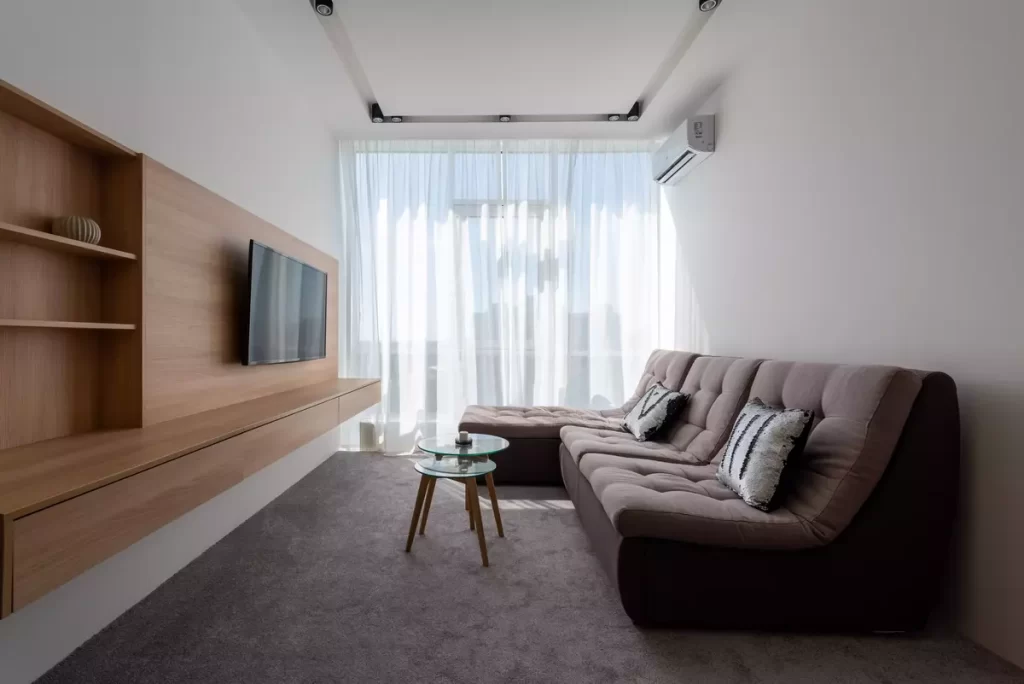
Leave clear paths between furniture and ensure at least 18 inches of space between seating and the coffee table.
6. Balance and Symmetry:
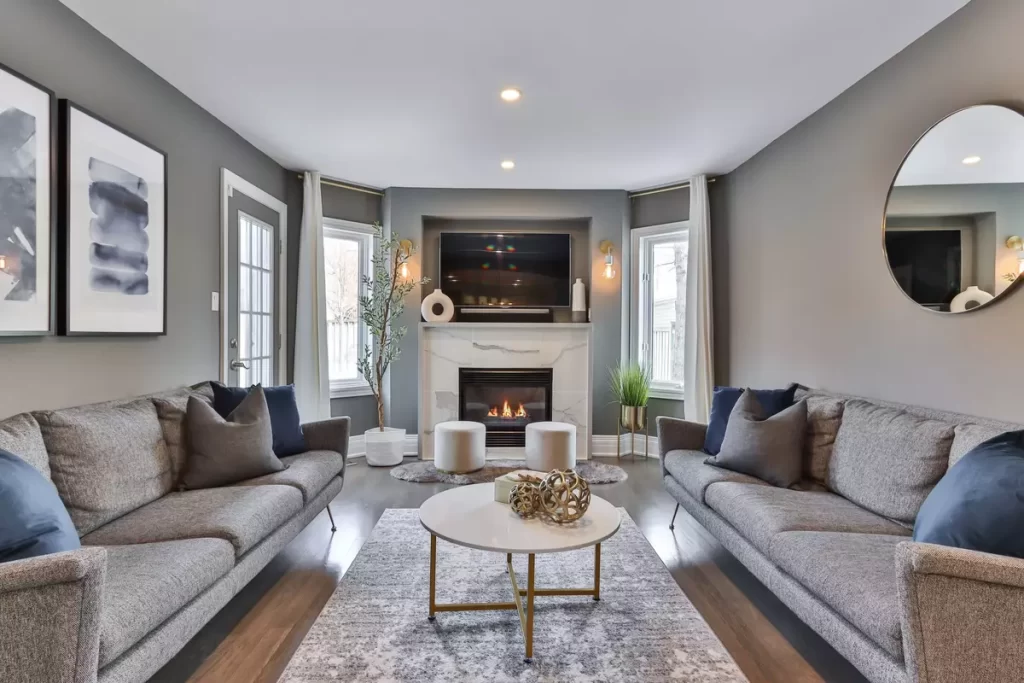
Distribute furniture evenly for a balanced look and use symmetry in accent pieces for harmony.
7. Mobile Furniture:
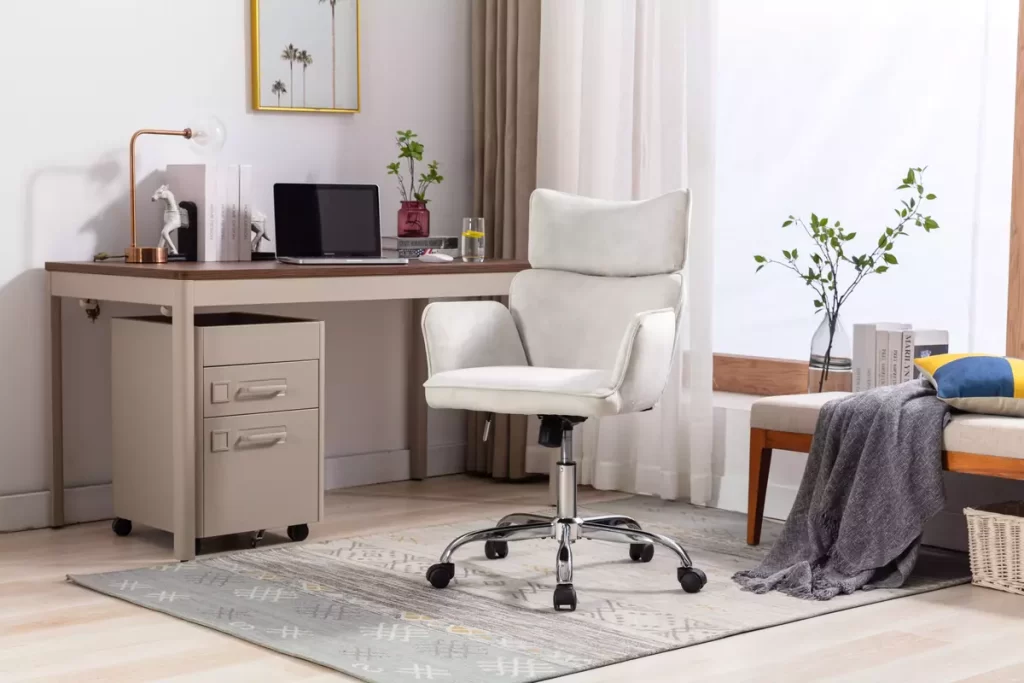
Opt for furniture with wheels or casters. This way, you can easily move pieces around to adapt to various activities or to free up space when needed.
8. Foldable and Nesting Furniture:
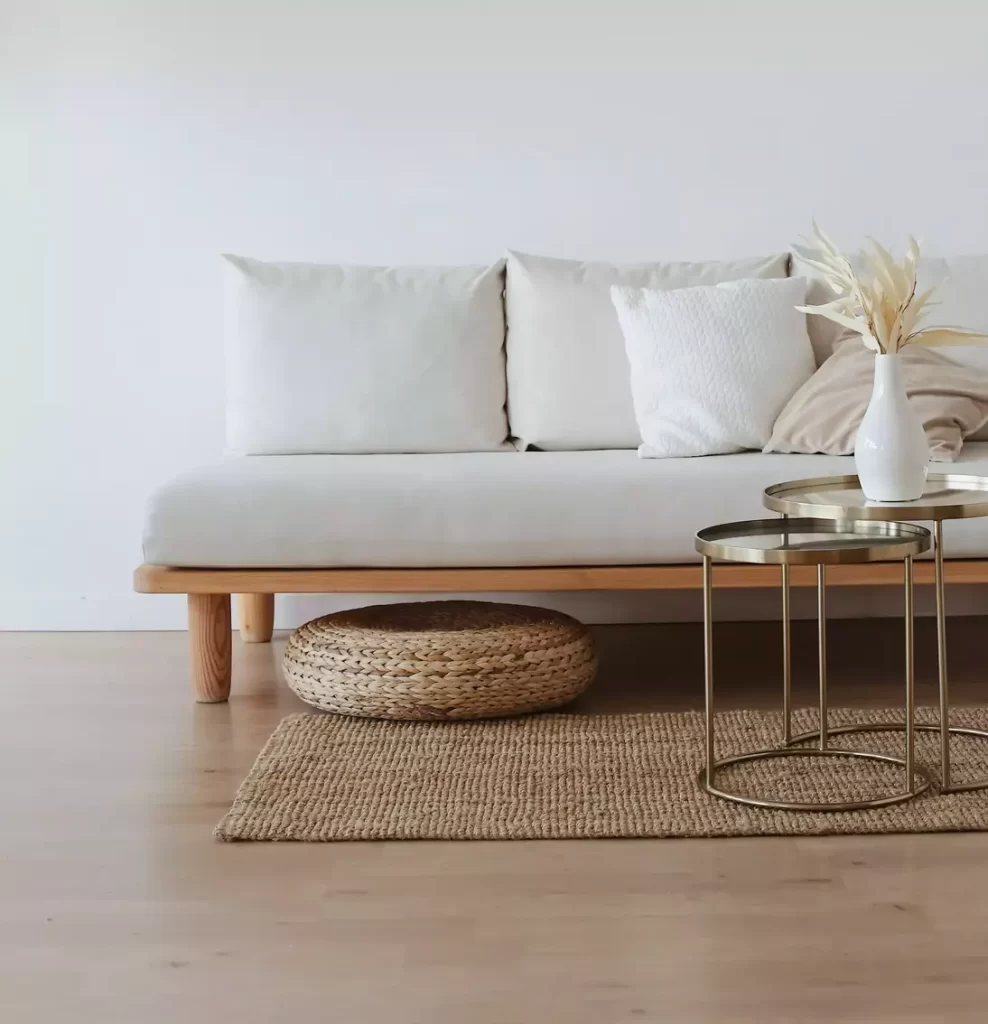
Invest in foldable tables and nesting stools or chairs. These can be tucked away when not in use, allowing you to reclaim floor space.
9. Wall-Mounted Desks:

If you need a workspace, install a wall-mounted desk that can be folded down when needed. It serves as a functional workstation without taking up floor space.
10. Sliding Doors or Curtains:
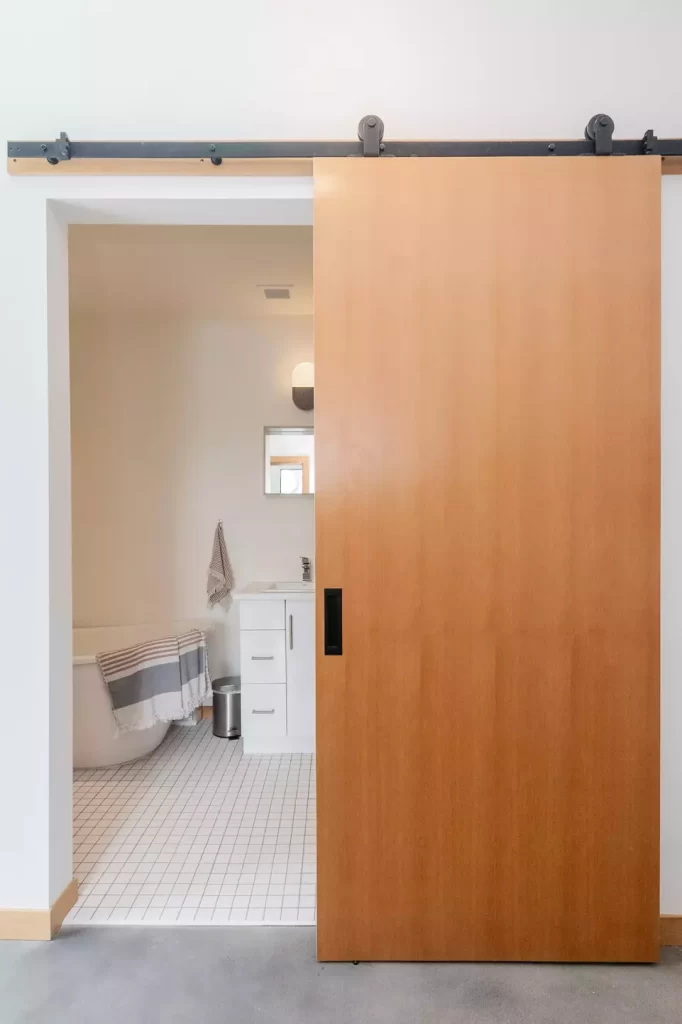
Instead of traditional swinging doors, consider sliding doors or curtains as room dividers. They save space and add a touch of elegance to the room.
11. Dual-Purpose Furniture:
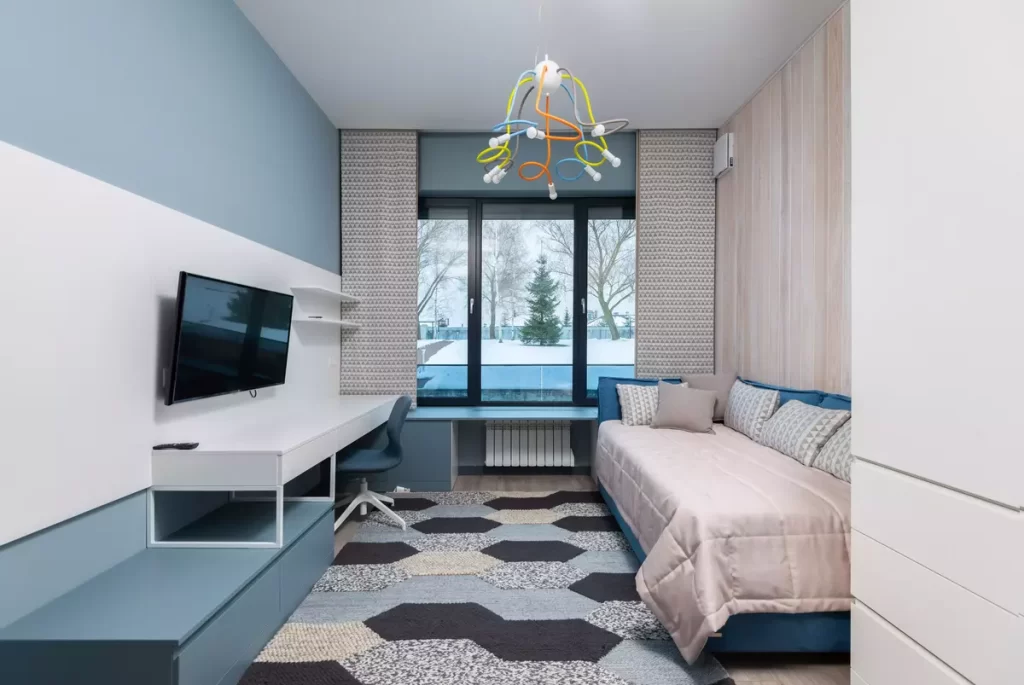
Look for furniture pieces that serve multiple functions, like a sofa with a built-in bed or a coffee table that transforms into a dining table.
12. Vertical Gardens:

If you have a green thumb, consider vertical gardens or hanging plants. They add a touch of nature without using up valuable floor space.
13. Clear Furniture:

Transparent or glass furniture, such as acrylic coffee tables or dining chairs, can create an illusion of more space by allowing light to pass through.
14. Under-Bed Storage:
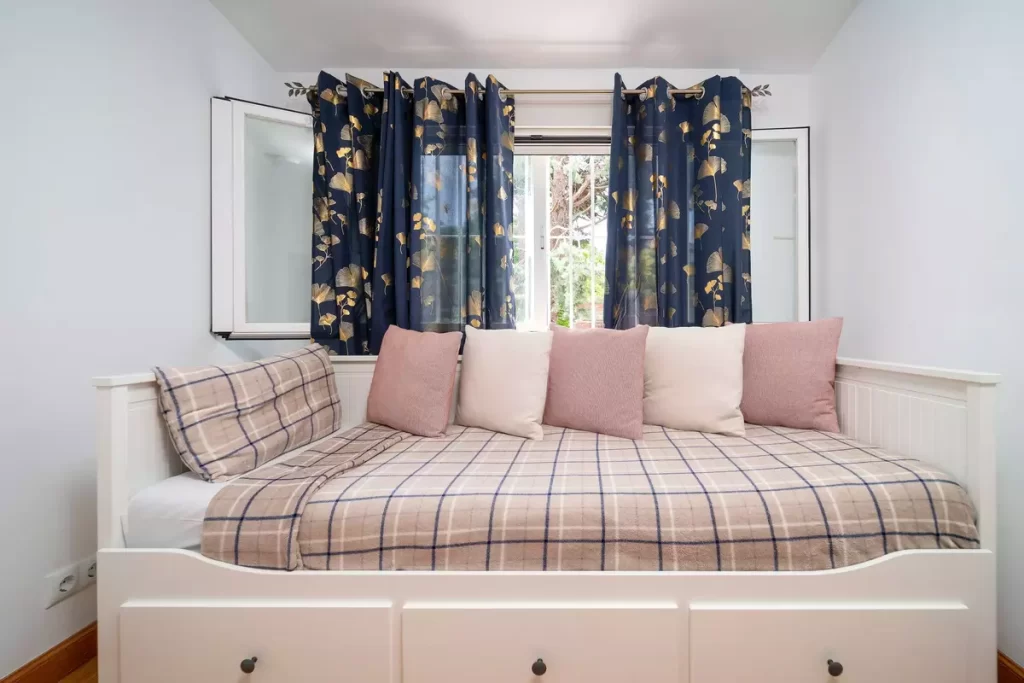
If your living room doubles as a bedroom, use under-bed storage solutions to keep bedding and other items neatly hidden away.
15. Use Corner Space:
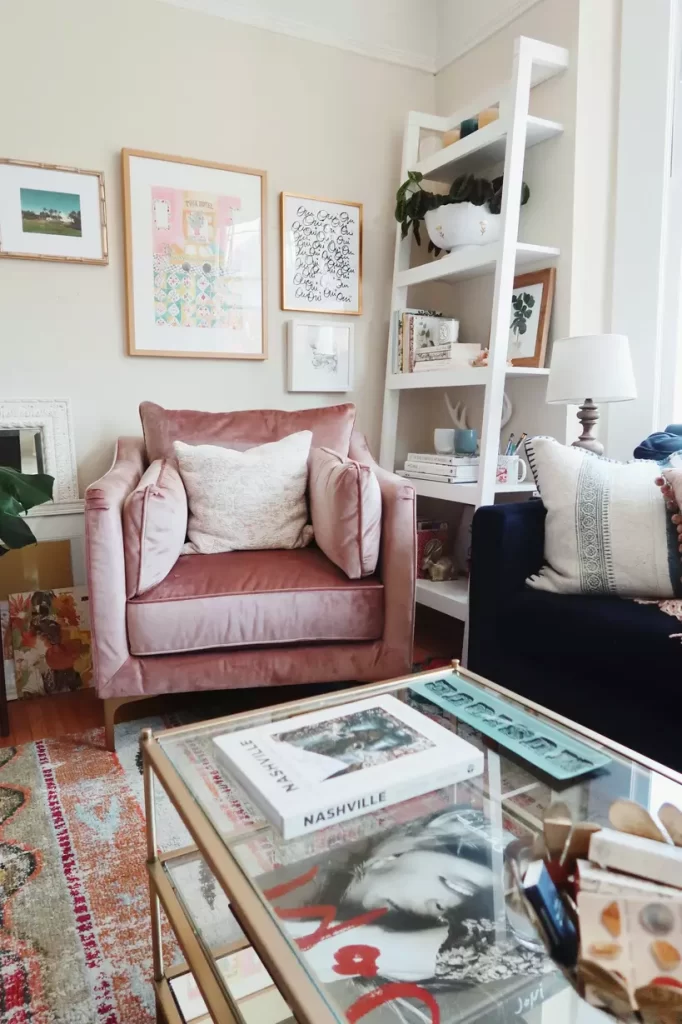
Corners often go unused. Consider placing a corner shelving unit or a cozy reading nook with a chair and floor lamp in these spaces.
16. Hanging Hammocks or Swing Chairs:
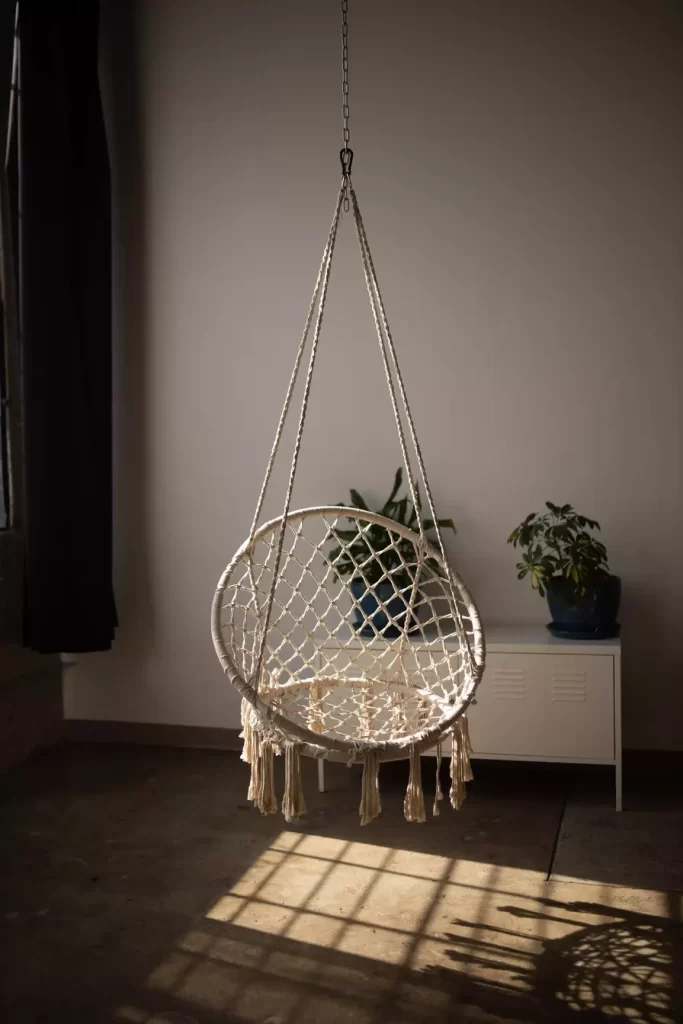
To add a playful and unique touch, consider hanging a hammock or a swing chair, creating a fun and relaxing corner without taking up valuable floor space.
17. Furniture with Built-In Storage:

Select sofas, ottomans, and coffee tables with hidden storage compartments to stow away items like blankets, magazines, or remote controls.
18. Floating Shelves:

Install floating shelves on walls to display décor items and free up floor space. They also serve as functional storage and decorative elements.
19. Gallery Wall:

Create a gallery wall with a collection of artwork or photographs. This not only adds personality but also draws the eye upwards, making the room feel taller.
20.Floor Pillows and Poufs:
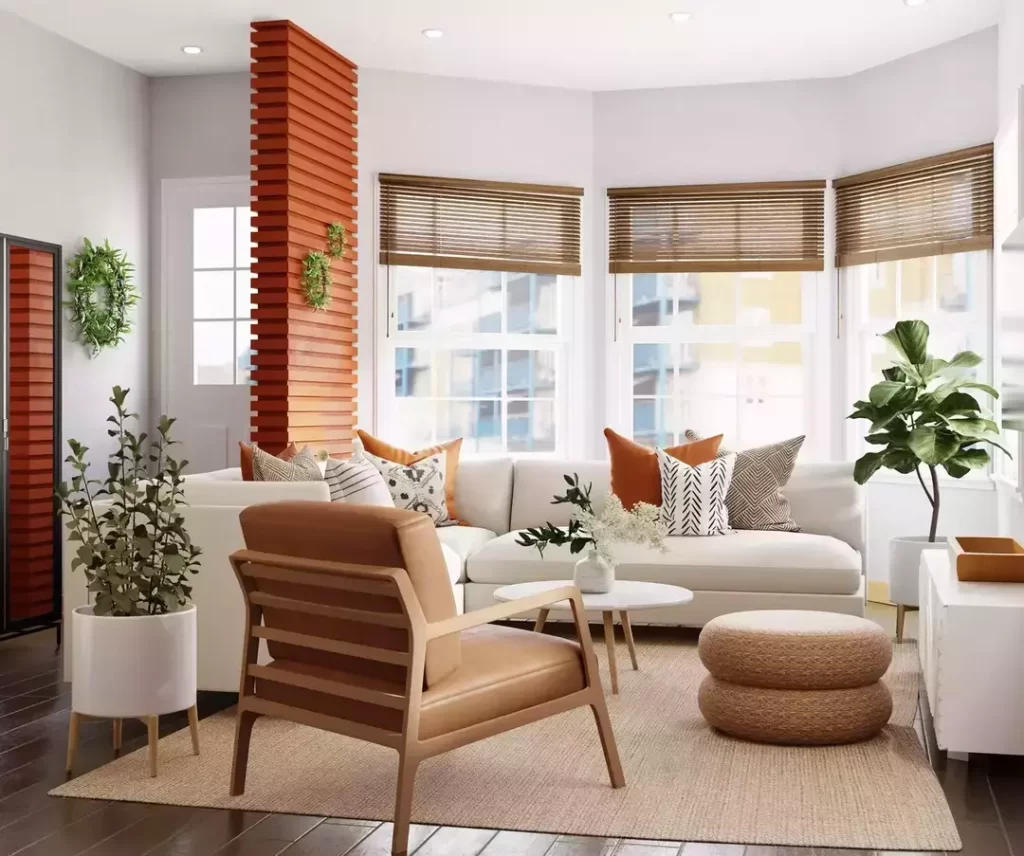
Incorporate floor pillows and poufs for additional seating that can be easily tucked away when not in use. They’re versatile and add a casual charm to the space.
21. Mirrored Furniture:

Beyond wall mirrors, consider furniture pieces with mirrored surfaces, like mirrored side tables or cabinets. They reflect light and create an illusion of more space.
22. Rugs:
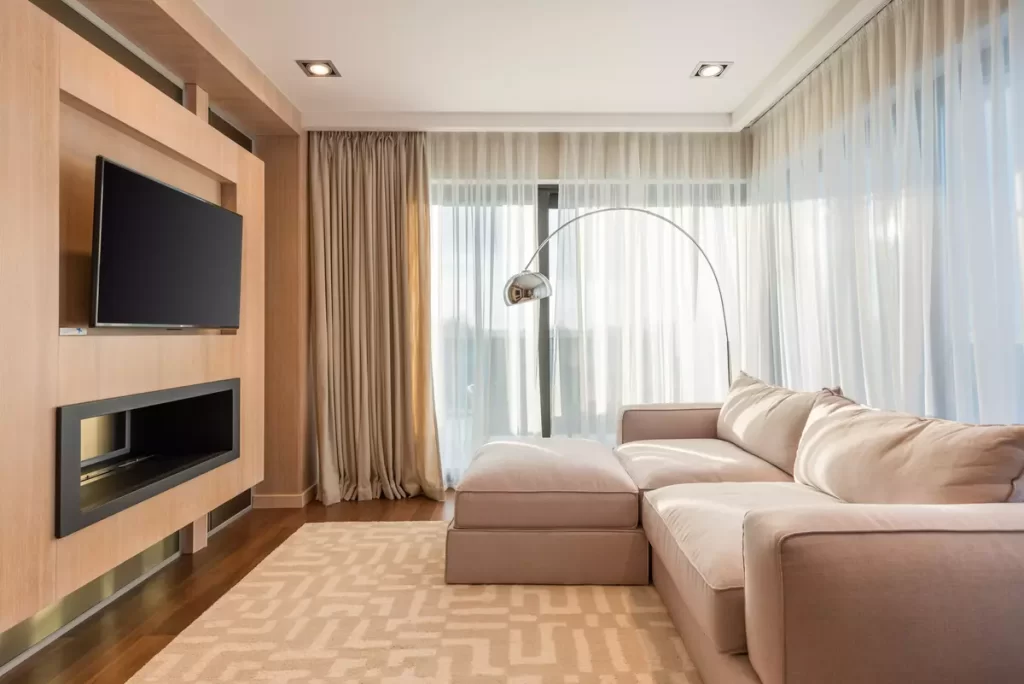
Opt for rugs with light colors and simple patterns to visually expand the floor area. Ensure that the rug is large enough to fit all the front legs of your furniture pieces.
23. Stackable Stools and Nesting Tables:

Keep extra seating and surface options on hand with stackable stools and nesting tables. They can be stacked neatly in a corner when not needed.
24. Use Vertical Lines:

Incorporate vertical lines in your décor, such as vertical stripes on curtains or wall paneling, to draw the eye upward and create a sense of height.
25. Wall-Mounted Entertainment Center:
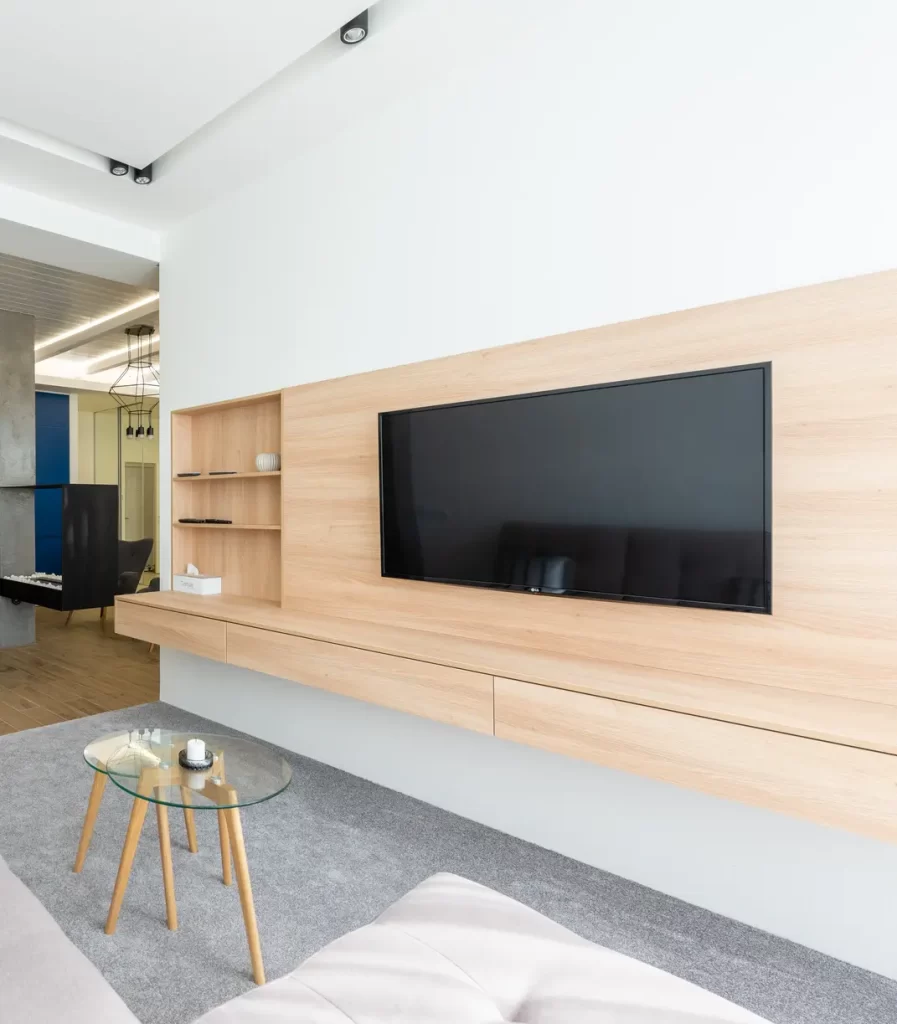
Opt for a wall-mounted TV stand or entertainment center to free up valuable floor space and create a sleek, modern look.
In the art of How to Arrange Furniture in a Small Living Room, practicality and aesthetics go hand in hand.
By following these tips, you can achieve a well-organized, visually pleasing, and functional layout in your small living room.
Arranging furniture in a small living room may seem like a challenge, but with the right approach, it becomes an artful endeavor.
In this article, we’ve explored a wealth of strategies and creative ideas to make the most of your limited space.
Apply these insights to your living space and witness the remarkable difference it makes.
Small living rooms have enormous potential, waiting to be unlocked with thoughtful design.
If you find yourself craving expert guidance or seeking a professional touch, don’t hesitate to reach out.
As an experienced interior designer, I can assist you in realizing your vision. Together, we can turn your small living space into a functional and stylish sanctuary.

Thank you dear, I’m overjoyed that I could assist you.
Thank you, Diane. Very appreciated
Thank you for your opinion Kirsten.
Thank you, Adele. I’m so happy that could help you.
Thank you so much Jo.
Thank you Gertjan.
Really helpful. Thanks for the great read!
These are such great tips! I love the advice about choosing pieces with built in storage – it makes such a difference!
What a comprehensive post! Now I’m sat in my living room staring around!! Definitely got me thinking!
Great tips! I have a very small space and will definitely be using some of these. Thanks for sharing!
Great tips! Thanks for sharing!
Beautiful blog with very helpful tips!